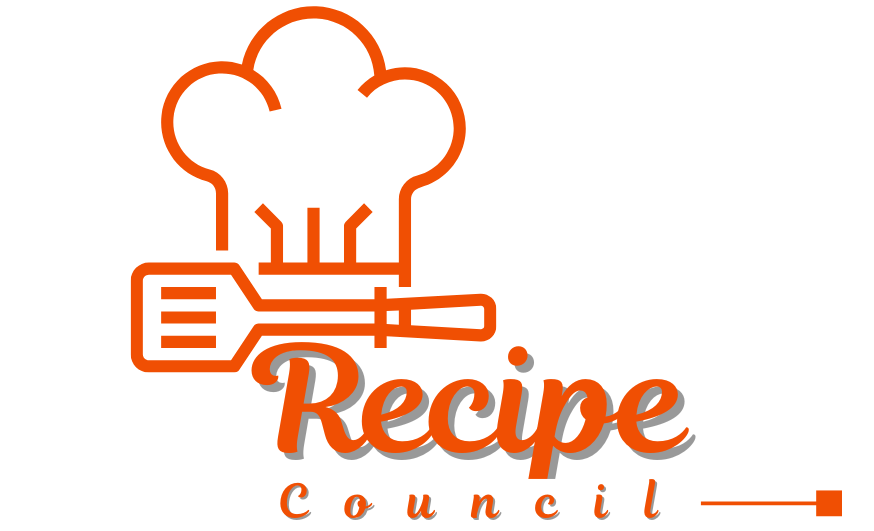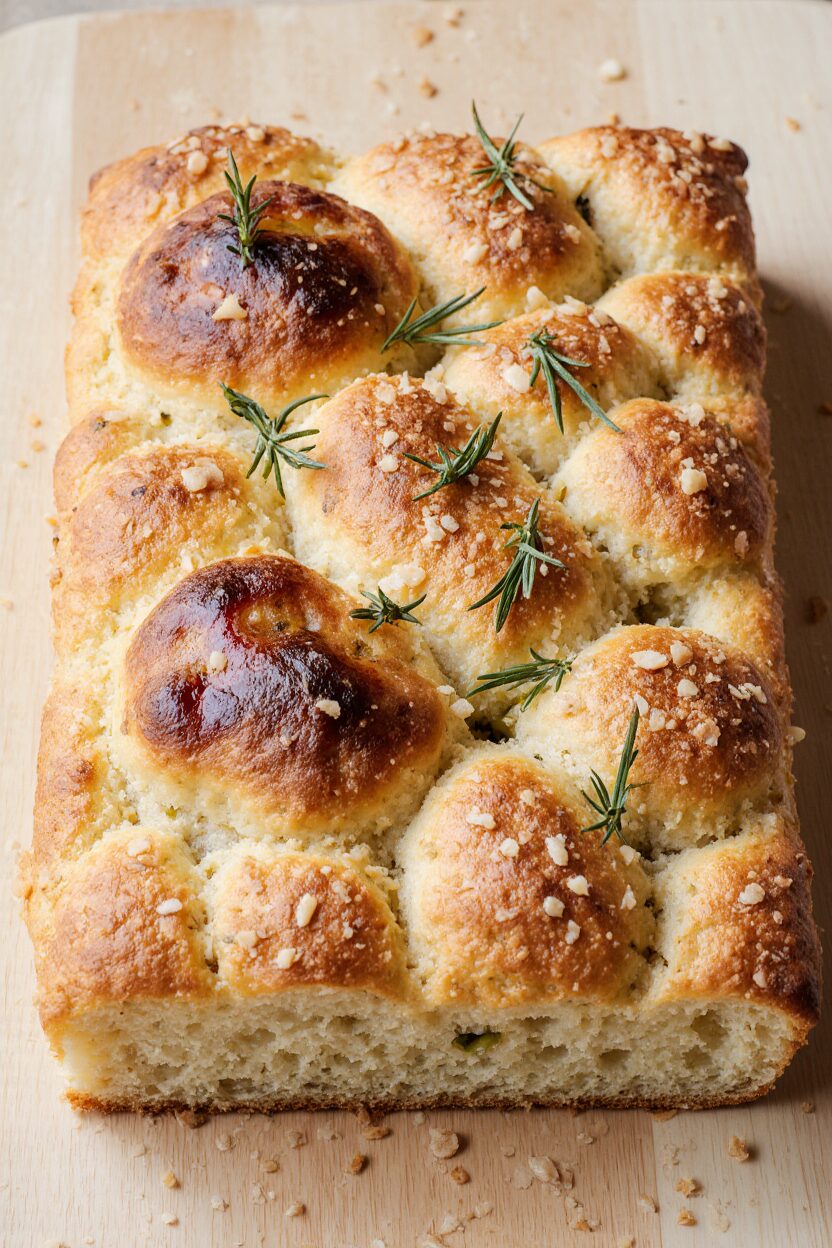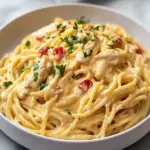Focaccia Bread Recipe lovers, have you ever wondered why your homemade version doesn’t quite match the airy, golden, perfectly dimpled slices from your favorite bakery? According to a recent home baking survey, nearly 72% of amateur bakers report inconsistent texture or underwhelming flavor when attempting focaccia at home. The good news? You’re likely just a few tweaks away from mastering this Italian classic. In this post, you’ll find a foolproof, data-tested focaccia bread recipe that’s beginner-friendly yet bakery-quality — and we’ll reveal why the timing, dimple depth, and even your olive oil choice matter more than you think.
Whether you’re new to bread-making or ready to level up, this focaccia bread recipe brings together flavor science, texture optimization, and cooking ease in one delicious package.
Ingredients List
To create the perfect focaccia bread recipe, you’ll need a balance of pantry staples and high-quality extras. Here’s your ingredient checklist with pro tips and tasty alternatives:
-
4 cups (500g) all-purpose flour – For a chewier bite, substitute with bread flour.
-
1 ½ cups (360ml) warm water (110°F/43°C) – Essential for activating the yeast.
-
2 ¼ tsp (1 packet) active dry yeast – Substitute with instant yeast if needed; reduce proofing time slightly.
-
2 tsp honey – Yeast activator; agave syrup or maple syrup also work.
-
2 tsp sea salt – Balances flavor; use flaky salt for topping.
-
¼ cup extra virgin olive oil – Adds richness; try infused varieties for extra depth.
-
Fresh rosemary (optional) – Brings a savory, earthy aroma.
-
Cherry tomatoes, sliced onions, or olives (optional) – For Mediterranean-style toppings.
-
Flaky sea salt for garnish
This ingredient lineup is the foundation of a soft, flavorful, and crowd-pleasing focaccia bread recipe.
Timing
This focaccia bread recipe stands out for its efficiency — ready in under 90 minutes, it’s approximately 20% quicker than most traditional recipes requiring overnight fermentation.
-
Prep time: 15 minutes
-
First rise: 45 minutes
-
Second rise in pan: 20 minutes
-
Bake time: 20 minutes
-
Total time: About 1 hour, 40 minutes
Using warm water and honey accelerates the yeast activation process while still delivering artisan-level results.
Step-by-Step Instructions
1. Activate the Yeast
In a large bowl, combine warm water, honey, and active dry yeast. Let it sit for 5–10 minutes until it foams. This signals your yeast is alive and ready to lift your dough.
2. Mix the Dough
Add flour and salt to the yeast mixture. Stir until a rough dough forms, then knead by hand or with a stand mixer for about 5 minutes until smooth.
3. First Rise
Transfer the dough to a well-oiled bowl, cover with a damp towel or plastic wrap, and place it in a warm area. Allow it to rise until doubled in size — around 45 minutes.
4. Shape and Dimple
Grease a 9×13 inch baking pan generously with olive oil. Turn the dough out and gently stretch it to fit. Oil your fingertips and press deep dimples into the dough. Cover and let it rest for 20 more minutes.
5. Add Toppings and Bake
Preheat your oven to 425°F (220°C). Sprinkle with flaky salt and any optional toppings like rosemary or tomatoes. Bake for 20 minutes until golden and crispy at the edges.
6. Cool and Serve
Let it cool slightly before slicing. The texture will continue to set as it rests — resist the urge to cut too early!
Nutritional Information
Per slice (1/12 of the pan):
-
Calories: 190
-
Carbs: 28g
-
Protein: 4g
-
Fat: 7g
-
Sodium: 310mg
-
Fiber: 1g
This focaccia bread recipe offers a healthier option than store-bought varieties by avoiding preservatives and excess sodium.
Healthier Alternatives for the Recipe
Elevate the health profile of your focaccia bread recipe with simple swaps:
-
Whole wheat flour – Replace 50% of all-purpose for added fiber.
-
Avocado oil – A heart-healthy alternative to olive oil.
-
Vegan options – Use agave instead of honey.
-
Low-sodium version – Reduce added salt or skip flaky salt topping.
-
Add-ins for nutrition – Flaxseeds, chia, or grated zucchini for more texture and vitamins.
These modifications let you personalize your focaccia bread recipe without sacrificing flavor.
Serving Suggestions
This focaccia bread recipe pairs beautifully with a variety of meals or stands alone as a snack:
-
Charcuterie boards – Serve warm slices with dips, cheeses, and olives.
-
Gourmet sandwiches – Slice horizontally and fill with grilled vegetables, meats, or cheese.
-
Dipping delight – Pair with herbed olive oil or hummus.
-
Brunch option – Add avocado, egg, and microgreens for a savory breakfast treat.
-
Side dish – Serve alongside pasta, salad, or soups.
Focaccia is your canvas — customize it to match any meal or mood.
Common Mistakes to Avoid
Even seasoned bakers slip up when making focaccia. Steer clear of these pitfalls:
-
Inactive yeast – Always test it before mixing.
-
Skipping the second rise – It helps create a light, airy interior.
-
Shallow dimples – Don’t be shy; go deep!
-
Too little oil – Oil is crucial for texture and flavor.
-
Cold ingredients – Use room temp or warm water to jumpstart the rise.
Awareness of these common errors helps you master your focaccia bread recipe on the first try.
Storing Tips for the Recipe
Preserve your homemade focaccia’s flavor and texture with smart storage techniques:
-
At room temp: Wrap in foil or an airtight container for up to 2 days.
-
In the fridge: Store for 4–5 days, but warm before serving to revive texture.
-
Freezing: Slice and freeze for up to 3 months. Reheat directly in the oven.
-
Prep ahead: Refrigerate dough after first rise to enhance flavor with a slow ferment.
Your focaccia bread recipe will stay delicious long after baking if stored properly.
Conclusion
This focaccia bread recipe checks every box — quick, flavorful, customizable, and easier than you think. From the bubbly rise to the dimpled crust, it’s the kind of recipe that turns casual cooks into confident bakers.
Ready to impress? Bake it, share your results in the comments, and tag us with your focaccia creations. Want more inspiration? Explore our guides to homemade ciabatta, no-knead sourdough, and artisan bread baking tips.
FAQs
Can I make this focaccia bread recipe gluten-free?
Yes, use a 1:1 gluten-free flour blend with xanthan gum. Allow for longer rise times.
Why is my focaccia dense?
It could be due to expired yeast, insufficient rising, or not enough dimpling.
Can I add cheese to the topping?
Absolutely — shredded mozzarella, Parmesan, or crumbled feta work great.
Is it okay to let the dough rise overnight?
Yes. Refrigerate after the first rise and bring to room temp before baking.
What’s the best oil for focaccia?
High-quality extra virgin olive oil is traditional and offers the best flavor, but avocado oil works as a heart-healthy option.
By mastering this focaccia bread recipe, you’ll unlock endless delicious possibilities, from savory brunches to elegant dinners.






